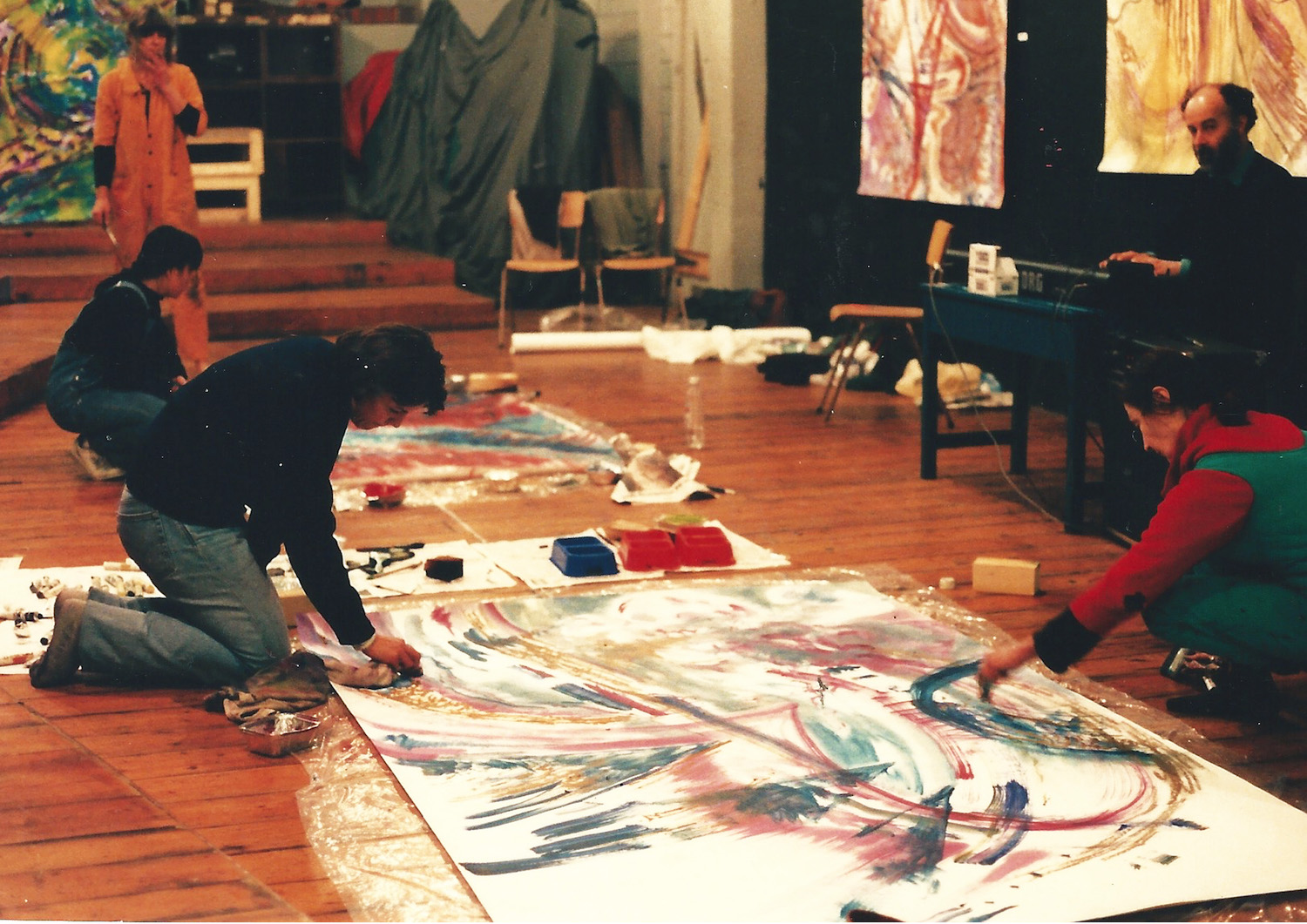
An exhibition by an artist once deemed “the wrong sex” is on display at Liverpool University’s Victoria Gallery & Museum ahead of International Women’s Day.
Abstract Thinking: Fanchon Fröhlich & Her Contemporaries explores the work of Liverpool-based artist and intellectual, Fanchon Fröhlich (1927 – 2016) alongside British abstract artists of the 20th century.
The free exhibition features 11 of her paintings and prints from The British Art and Design Association (BADA) archives, showing her strongly gestural and spontaneous abstract expressionist style. These are on display alongside other abstract artists from the University’s collection, many of whom she worked with during her career.
A prolific abstract expressionist painter, printmaker and draughtsperson throughout her life, Fanchon’s practice crossed over into a number of other disciplines including philosophy and theoretical physics. Born in the US, Fanchon moved to Liverpool in 1949 where she remained until she died in 2016.
When she passed away, she left her substantial collection of art and important biographical documents to another Liverpool-based artist, Terry Duffy who founded the charitable arts organisation BADA in 1986. Duffy continues to be instrumental in the conservation and promotion of Fanchon’s legacy as chair of BADA.
He explained that the Toxteth house, where Fanchon lived for decades, was overflowing with her life’s work. Many of the things stored in the damp basement were lost but there is still a phenomenal amount that has been saved and professionally archived, including never before seen letters, journals and papers, as well as artworks.
While the world is familiar with many of her male contemporaries such as Jackson Pollock, Mark Rothko or Willem de Kooning, Fanchon has been long underappreciated because she was a woman.
He said: “Fanchon was an incredibly talented and innovative artist but was sadly overlooked in her lifetime, purely because she was a woman. She actually told me that she was once dismissed for being “the wrong sex.
“She left an extraordinary legacy of work which deserves to be recognised. This exhibition is an opportunity to introduce her work to new audiences and demonstrate the impact she had across artistic, scientific and philosophical spheres.”
Fanchon’s friendship with Duffy was a source of artistic inspiration, particularly in relation to her Collective Phenomena work. These were ‘happenings’ involving several artists (usually female) painting on the same canvas, without speaking, allowing the work to unfold subconsciously, yet with what they described as “a collective will”. These events occupied the last two decades of her life, combining her artistic fervour with her profound understanding of the unconscious mind. Examples of these collaborative abstract works can be seen in a separate, smaller gallery, along with a display that explores the printmaking aspect of her practice.
Also featured in the exhibition is one of Terry’s own works, The Miraculous Draught of Fishes, which was exhibited in the 1991 John Moores Painting Prize at Walker Art Gallery. The enormous painting is displayed alongside artists such as Gillian Ayres (1930 – 2018), Sandra Blow (1925–2006), Peter Lanyon (1918–1964), William Hayter (1901 – 1988), plus other leading artists who worked in the city from the 1950s onwards.
Nicola Euston, Head of Museums and Galleries at the University of Liverpool, added: “We are delighted to showcase the work of Fanchon Fröhlich in this unique way. This is the first time her work has been seen alongside these major paintings from our own collection by a range of her contemporaries. Fröhlich’s work did not get the recognition it deserved during her lifetime and we hope this exhibition offers more context to her achievements and artistic practice.”
Abstract Thinking: Fanchon Fröhlich and her Contemporaries, is being shown until 30 March 2024, at the Victoria Gallery & Museum, Ashton Street, Liverpool L69 3DR.

